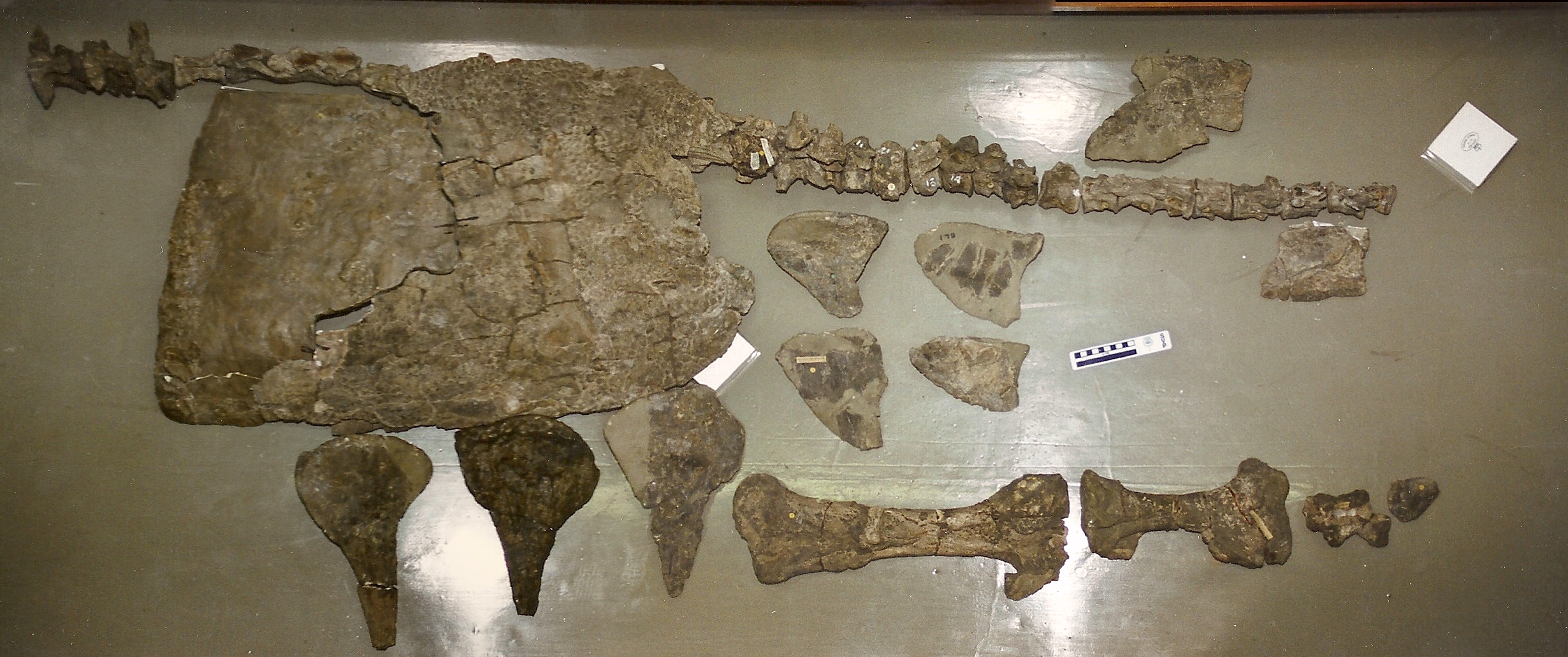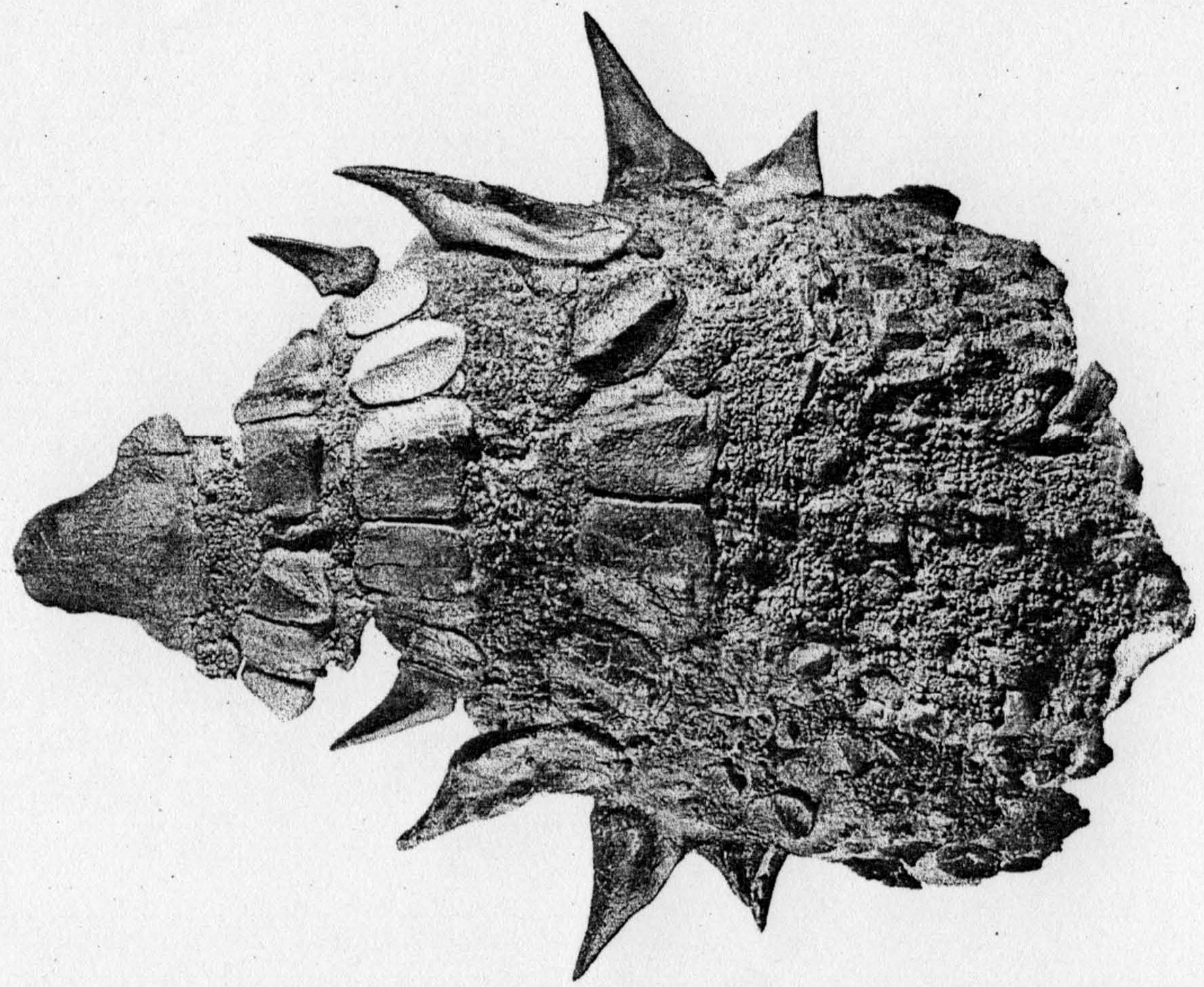|
1865 In Paleontology
Newly named archosauromorphs Newly named basal archosauromorphs Newly named dinosaurs Plesiosaurs Newly named plesiosaurs References {{Reflist 1860s in paleontology 1865, Paleontology 1860s in science, Paleontology 5 1865 in science, Paleontology, 1865 In ... [...More Info...] [...Related Items...] OR: [Wikipedia] [Google] [Baidu] |
Ankistrodon
''Ankistrodon'' is an extinct genus of archosauriform known from the Early Triassic Panchet Formation of India. First thought to be a theropod dinosaur, it was later determined to be a proterosuchid. The type species is ''A. indicus'', described by prolific British zoologist Thomas Henry Huxley in 1865.T. H. Huxley. 1865. On a collection of vertebrate fossils from the Panchet rocks, Ranigunj, Bengal. ''Palaeontologia Indica'' 4:1-24 One authority in the 1970s classified ''Ankistrodon'' as a senior synonym of ''Proterosuchus''. References Fossil taxa described in 1865 Early Triassic reptiles of Asia Taxa named by Thomas Henry Huxley Prehistoric reptile genera {{triassic-reptile-stub ... [...More Info...] [...Related Items...] OR: [Wikipedia] [Google] [Baidu] |
Polacanthus
''Polacanthus'', deriving its name from the Ancient Greek polys-/πολύς- "many" and akantha/ἄκανθα "thorn" or "prickle", is an early armoured, spiked, plant-eating ankylosaurian dinosaur from the early Cretaceous period of England. In the genus ''Polacanthus'' several species have been named but only the type species ''Polacanthus foxii'' is today seen as valid. ''Polacanthus'' was a quadrupedal ornithischian or "bird-hipped" dinosaur. It lived 130 to 125 million years ago in what is now western Europe.Holtz, Thomas R. Jr. (2012) ''Dinosaurs: The Most Complete, Up-to-Date Encyclopedia for Dinosaur Lovers of All Ages,''https://www.geol.umd.edu/~tholtz/dinoappendix/appendix.html ''Polacanthus foxii'' was named after a find on the Isle of Wight in 1865. There are not many fossil remains of this creature, and some important anatomical features, such as its skull, are poorly known. Early depictions often gave it a very generic head as it was only known from the rear half o ... [...More Info...] [...Related Items...] OR: [Wikipedia] [Google] [Baidu] |
Microcleidus
''Microcleidus'' is an extinct genus of sauropterygian reptile belonging to the Plesiosauroidea. The species has 40 neck vertebrae and a short tail of 28 vertebrae. Fossils of the genus have been found in France, the Posidonia Shale in Germany and Luxembourg, and the Alum Shale Formation of England. Description The type species, ''M. homalospondylus'', was the largest, measuring long and weighing . Other species were smaller: ''M. tournemirensis'' was about long and weighed , and ''M. melusinae'' was about long and weighed . Classification Species include: ''Microcleidus homalospondylus'' (Owen 1865) and ''Microcleidus macropterus'' (Seeley 1865). ''Occitanosaurus tournemirensis'' (originally ''"Plesiosaurus" tournemirensis''), was named by Sciau ''et al.'' in 1990, based on a nearly complete skeleton of an animal approximately 4 meters (13 ft) long.Ketchum HF, Benson RBJ. Global interrelationships of Plesiosaur (Reptilia, Sauropterygia) and the pivotal role of ... [...More Info...] [...Related Items...] OR: [Wikipedia] [Google] [Baidu] |
Plesiosaur
The Plesiosauria (; Greek: πλησίος, ''plesios'', meaning "near to" and ''sauros'', meaning "lizard") or plesiosaurs are an order or clade of extinct Mesozoic marine reptiles, belonging to the Sauropterygia. Plesiosaurs first appeared in the latest Triassic Period, possibly in the Rhaetian stage, about 203 million years ago. They became especially common during the Jurassic Period, thriving until their disappearance due to the Cretaceous–Paleogene extinction event at the end of the Cretaceous Period, about 66 million years ago. They had a worldwide oceanic distribution, and some species at least partly inhabited freshwater environments. Plesiosaurs were among the first fossil reptiles discovered. In the beginning of the nineteenth century, scientists realised how distinctive their build was and they were named as a separate order in 1835. The first plesiosaurian genus, the eponymous ''Plesiosaurus'', was named in 1821. Since then, more than a hundred valid ... [...More Info...] [...Related Items...] OR: [Wikipedia] [Google] [Baidu] |
Santonian
The Santonian is an age in the geologic timescale or a chronostratigraphic stage. It is a subdivision of the Late Cretaceous Epoch or Upper Cretaceous Series. It spans the time between 86.3 ± 0.7 mya (million years ago) and 83.6 ± 0.7 mya. The Santonian is preceded by the Coniacian and is followed by the Campanian.Gradstein ''et al.'' (2004) Stratigraphic definition The Santonian Stage was established by French geologist Henri Coquand in 1857. It is named after the city of Saintes in the region of Saintonge, where the original type locality is located. The base of the Santonian Stage is defined by the appearance of the inoceramid bivalve ''Cladoceramus undulatoplicatus''. The GSSP (official reference profile) for the base of the Santonian Stage is located near Olazagutia, Spain; it was ratified by the Subcommission on Cretaceous Stratigraphy in 2012. The Santonian's top (the base of the Campanian Stage) is informally marked by the extinction of the crinoid '' Marsupites tes ... [...More Info...] [...Related Items...] OR: [Wikipedia] [Google] [Baidu] |
Piratosaurus
''Piratosaurus'' (meaning "Multiplied pirate lizard") is a dubious genus of plesiosaur possibly belonging to the Polycotylidae J. J. Sepkoski. (2002). A compendium of fossil marine animal genera. ''Bulletins of American Paleontology'' 363:1-560 that is known exclusively from the type species ''P. plicatus'', named and described by Joseph Leidy in 1865. Leidy, J. (1865). Cretaceous reptiles of the United States. ''Smithsonian Contributions to Knowledge'' 192:1-135 It is known only from the holotype, USNM V 1000, a tooth, discovered in Late Cretaceous-aged rocks in the Red River basin of Manitoba; at least one researcher erroneously assumed it was found in Minnesota. Hay, O. P. (1930). ''Second Bibliography and Catalogue of the Fossil Vertebrata of North America'' 390(II):1-1074 See also * List of plesiosaur genera * Timeline of plesiosaur research This timeline of plesiosaur research is a chronologically ordered list of important fossil discoveries, controversies of interpret ... [...More Info...] [...Related Items...] OR: [Wikipedia] [Google] [Baidu] |
Anhanguera , a television production facility
{{DEFAULTSORT:Anhanguera ...
Anhanguera may refer to: People * Bartolomeu Bueno da Silva (1672–1740), a bandeirante Places in Brazil * Anhanguera, Goiás, a municipality in the state of Goiás * Anhanguera (district of São Paulo), a district in São Paulo * Parque Anhanguera, a municipal park in São Paulo * Rede Anhanguera de Comunicação (RAC), a mass communication company from Campinas * Rodovia Anhanguera, a highway in the state of São Paulo Other meanings *Anhanguera (devil), in Brazilian mythology * ''Anhanguera'' (pterosaur) * Anhanguera Educacional, an educational company * CDT da Anhanguera The Centro de Televisão da Anhanguera, popularly known as CDT da Anhanguera, is the second largest center of television production in Brazil and is the headquarters of the Brazilian TV company SBT. The complex is second only to the Estúdios Glob ... [...More Info...] [...Related Items...] OR: [Wikipedia] [Google] [Baidu] |
André Marie Constant Duméril
André Marie Constant Duméril (1 January 1774 – 14 August 1860) was a French zoologist. He was professor of anatomy at the Muséum national d'histoire naturelle from 1801 to 1812, when he became professor of herpetology and ichthyology. His son Auguste Duméril was also a zoologist. Life André Marie Constant Duméril was born on 1 January 1774 in Amiens and died on 14 August 1860 in Paris. He became a doctor at a young age, obtaining, at 19 years, the ''prévot'' of anatomy at the medical school of Rouen. In 1800, he left for Paris and collaborated in the drafting of the comparative anatomy lessons of Georges Cuvier. He replaced Cuvier at the Central School of the Panthéon and had, as his colleague, Alexandre Brongniart. In 1801, he gave courses to the medical school of Paris. Under the ''Restauration'', he was elected a member of the Académie des Sciences (French Academy of Sciences) and after 1803 succeeded Lacépède, who was occupied by his political offic ... [...More Info...] [...Related Items...] OR: [Wikipedia] [Google] [Baidu] |
Diplotomodon
''Diplotomodon'' (meaning "double cutting tooth") is a dubious genus of theropod dinosaur, from New Jersey. It was possibly a member of the Tyrannosauroidea, the clade that also contains ''Tyrannosaurus''. ''Diplotomodon'' is only known from a single tooth, holotype ANSP 9680, found near Mullica Hill in either the Navesink or Hornerstown Formation, marine deposits dating to the Maastrichtian stage of the late Cretaceous period. Joseph Leidy originally described the tooth using the name ''Tomodon'' in 1865, considering it a carnivorous marine reptile, probably a plesiosaur. The generic name was derived from Greek τομός (''tomos''), "cutting", "sharp", and ὀδών (''odon''), "tooth". However, this name had already been used for the snake genus '' Tomodon'' Duméril 1853 and Leidy changed it in 1868 to ''Diplotomodon'', adding a Greek διπλόος (''diploos''), "double", at that time suggesting it was a fish. The type species, ''Diplotomodon'' ''Tomodon''''horrificus'' ... [...More Info...] [...Related Items...] OR: [Wikipedia] [Google] [Baidu] |
Polacanthus Foxii
''Polacanthus'', deriving its name from the Ancient Greek polys-/πολύς- "many" and akantha/ἄκανθα "thorn" or "prickle", is an early armoured, spiked, plant-eating ankylosaurian dinosaur from the early Cretaceous period of England. In the genus ''Polacanthus'' several species have been named but only the type species ''Polacanthus foxii'' is today seen as valid. ''Polacanthus'' was a quadrupedal ornithischian or "bird-hipped" dinosaur. It lived 130 to 125 million years ago in what is now western Europe.Holtz, Thomas R. Jr. (2012) ''Dinosaurs: The Most Complete, Up-to-Date Encyclopedia for Dinosaur Lovers of All Ages,''https://www.geol.umd.edu/~tholtz/dinoappendix/appendix.html ''Polacanthus foxii'' was named after a find on the Isle of Wight in 1865. There are not many fossil remains of this creature, and some important anatomical features, such as its skull, are poorly known. Early depictions often gave it a very generic head as it was only known from the rear half of ... [...More Info...] [...Related Items...] OR: [Wikipedia] [Google] [Baidu] |
Ankylosaur
Ankylosauria is a group of herbivorous dinosaurs of the order Ornithischia. It includes the great majority of dinosaurs with armor in the form of bony osteoderms, similar to turtles. Ankylosaurs were bulky quadrupeds, with short, powerful limbs. They are known to have first appeared in the Middle Jurassic, and persisted until the end of the Cretaceous Period. The two main families of Ankylosaurs, Nodosauridae and Ankylosauridae are primarily known from the Northern Hemisphere, but the more basal Parankylosauria are known from southern Gondwana during the Cretaceous. Ankylosauria was first named by Henry Fairfield Osborn in 1923.Osborn, H. F. (1923). "Two Lower Cretaceous dinosaurs of Mongolia." ''American Museum Novitates'', 95: 1–1/ref> In the Linnaean classification system, the group is usually considered either a suborder or an infraorder. It is contained within the group Thyreophora, which also includes the stegosaurs, armored dinosaurs known for their combination of plate ... [...More Info...] [...Related Items...] OR: [Wikipedia] [Google] [Baidu] |
Polacanthinae
Polacanthinae is a subfamily of ankylosaurs, most often nodosaurids, from the Late Jurassic through Early Cretaceous of Europe and potentially North America and Asia. The group is defined as the largest clade closer to ''Polacanthus foxii'' than '' Nodosaurus textilis'' or ''Ankylosaurus magniventris'', as long as that group nests within either Nodosauridae or Ankylosauridae. If ''Polacanthus'', and by extent Polacanthinae, falls outside either family-level clade, then the ''-inae'' suffix would be inappropriate, and the proper name for the group would be the informally defined Polacanthidae. Polacanthines were somewhat more lightly armoured than more advanced ankylosaurids and nodosaurids. Their spikes were made up of thin, compact bone with less reinforcing collagen than in the heavily armoured nodosaurids. The relative fragility of polacanthine armour suggests that it may have been as much for display as defense. They appear to have become extinct about the same time a land br ... [...More Info...] [...Related Items...] OR: [Wikipedia] [Google] [Baidu] |





